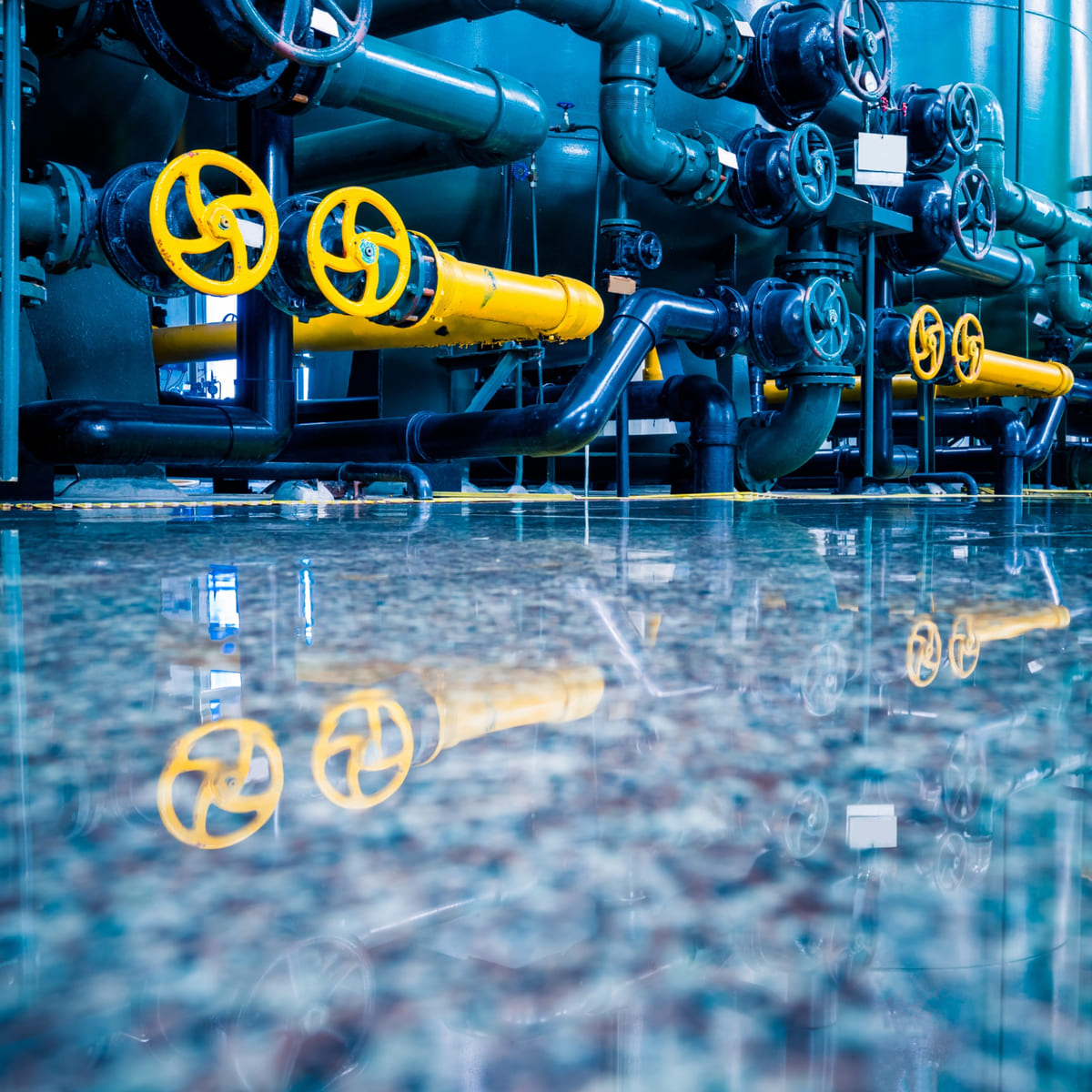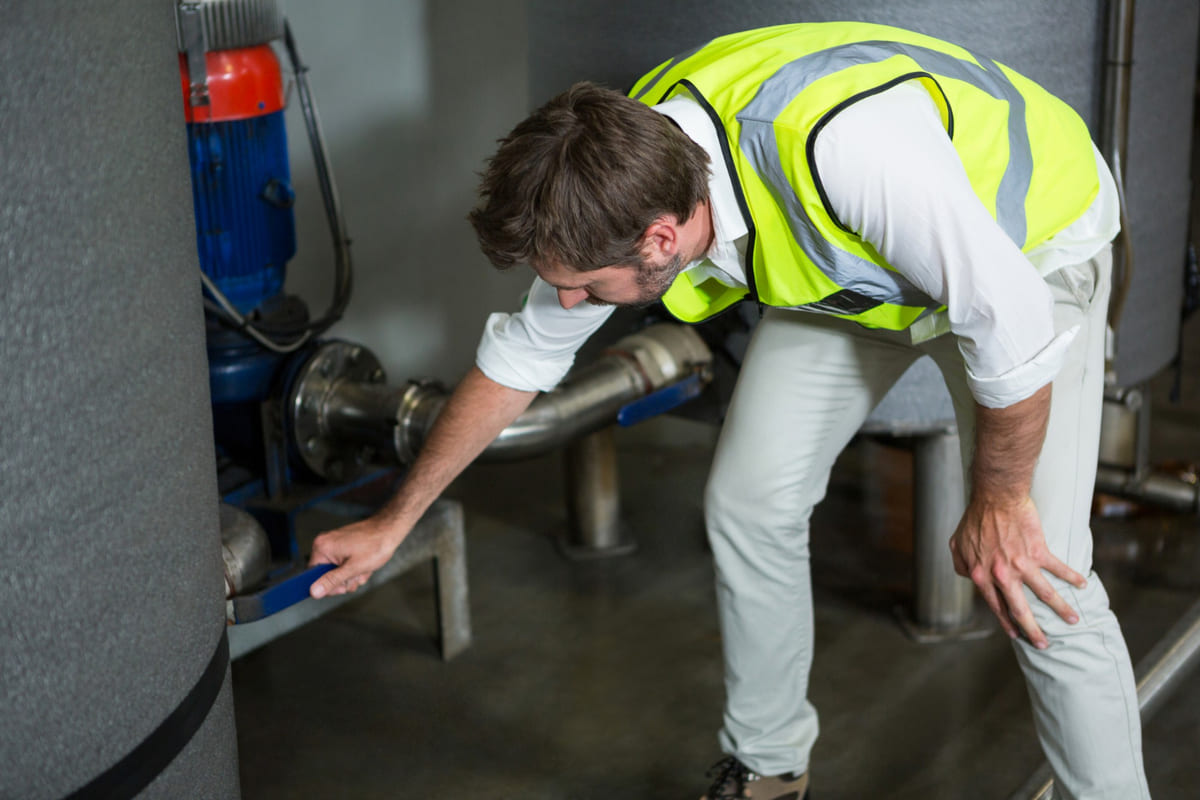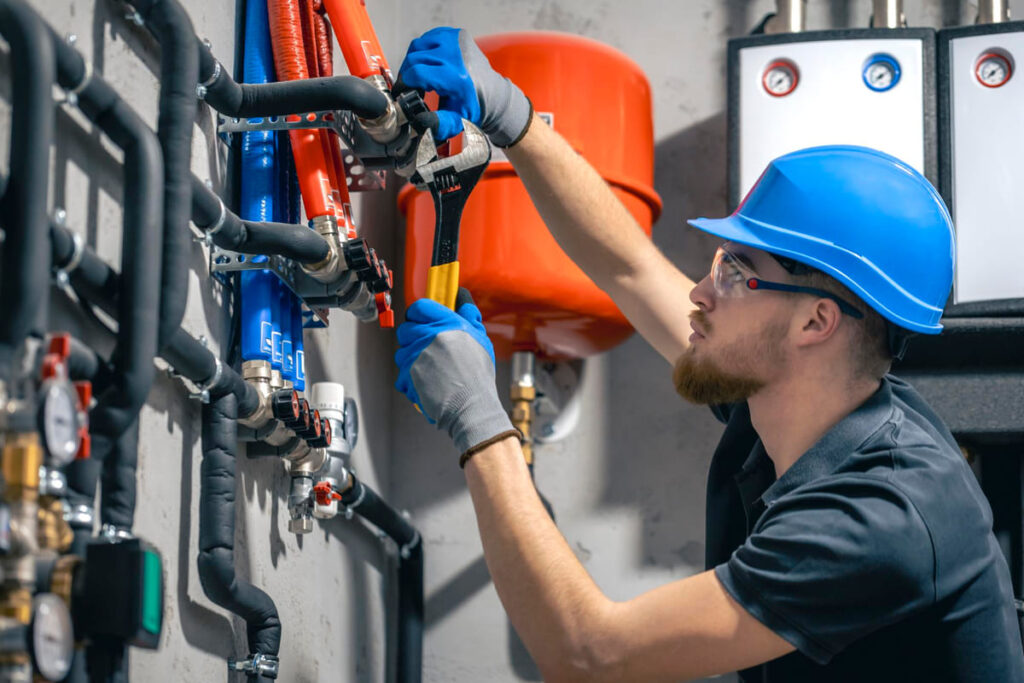Water is one of the most persistent and costly risks on large construction sites. Uncontrolled water intrusions – whether from burst pipes, heavy rains, or unnoticed leaks – can quickly halt work and wreak havoc. Studies have found that water damage incidents account for roughly one-third of construction insurance claims, making it a leading cause of loss on projects worldwide. When water inundates a site, project timelines derail: work pauses for cleanup, soaked materials need replacement, and schedules get pushed back, inflating costs.
Water Leakage Sensors in Construction serve as an early warning system, monitoring for signs of leaks or flooding around the clock. By detecting water in real-time, sensors empower crews to respond immediately, often before significant damage occurs. A recent industry study showed that projects equipped with smart water monitoring had 75% fewer water-damage insurance claims than those without.
Table of Contents
Problems and Consequences
Beyond schedule impacts, structural integrity can be jeopardized by water. Construction materials are vulnerable when saturated – wood framing can swell or rot, steel components may corrode, and fresh concrete can be weakened if curing is disrupted. Even after water is removed, hidden moisture can foster mold within days, necessitating costly rework. Such damage not only undermines the building’s quality but also poses safety hazards (slick surfaces, electrical short-circuits, or even collapse of weakened structures). A water mishap can turn a controlled construction environment into a dangerous and expensive mess.
-
Burst Pipes and System Failures: Accidental breaks in water lines or fire sprinkler pipes can release thousands of gallons. For example, a contractor inadvertently breaking a pressurized line can flood multiple floors in minutes. In one case, a broken sprinkler pipe went undetected until it caused over $500,000 in damage. Such incidents soak materials and equipment, requiring extensive repairs and delay.
-
Weather-Induced Flooding: Heavy rain or storm runoff can breach a site if protections aren’t in place. Openings in incomplete roofs or foundation excavations can quickly fill with water during downpours. This leads to erosion, damage to unfinished work, and project delays while crews pump out water and fix waterlogged sections.
-
Equipment Leaks and Seepage: Gradual leaks from construction equipment, temporary piping, or storage tanks may go unnoticed for days. A slow leak – for instance from a faulty pump connection – can create hidden puddles that undermine freshly placed concrete or damage finishes. By the time such a leak is discovered, it might have caused structural concerns or ruined critical materials, resulting in rework and schedule slips.
Water-related incidents have cascading consequences. They routinely cause multi-day disruptions, and in severe cases can set projects back by weeks. Financially, the direct cost of water damage (cleanup, material replacement, labor) is compounded by indirect costs (schedule overruns and insurance repercussions). Notably, large water damage claims over $1 million have tripled in frequency since 2015. Given these stakes, construction teams are increasingly seeking proactive measures to detect and stop leaks before they escalate.
Suggested article to read: 5 Critical Applications of Vibration Sensors on Large-Scale Sites

Solutions with Sensors
Modern technology provides an effective defense against these water threats. Water Leakage Sensors in Construction serve as an early warning system, monitoring for signs of leaks or flooding around the clock. By detecting water in real-time, sensors empower crews to respond immediately – often before significant damage occurs. In fact, a recent industry study showed that projects equipped with smart water monitoring had 75% fewer water-damage insurance claims than those without. Below are five key benefits of using these sensors on site:
-
Early Leak Detection and Prevention: Sensors catch leaks at the earliest drip, enabling the team to stop water intrusion before it grows. This prevents minor seepages from snowballing into major incidents.
-
Wide Area Coverage: With the right sensor setup, even large and complex sites are monitored. Long cable sensors or numerous wireless units ensure no corner goes unchecked, covering areas that human patrols might miss.
-
Real-Time Alerts: These systems send instant alarms (via siren, text message, etc.) the moment they detect water. Immediate notification means issues can be addressed 24/7 – even nights or weekends when staff might not be on site.
-
Automated Response Integration: Advanced sensors tie into broader systems – for example, automatically shutting off a water valve or triggering a site-wide alarm when a leak is detected. This automation can drastically limit water release and damage.
-
Reduced Damage and Downtime: By preventing major floods, sensors maintain a safer work environment and protect materials. Avoiding extensive water damage means less cleanup, less rework, and minimal schedule disruption.
Several types of water leakage sensors can deliver these benefits. The main typologies include point sensors, cable sensors, wireless (IoT) sensors, and fully integrated systems. Each plays a role in safeguarding a construction project:

1. Point Sensors (Spot Detectors)
Point sensors are small devices placed at specific spots likely to get wet. They have exposed electrodes or probes that trigger an alert when water touches them. Contractors put these under pipe joints, near pumps, or on floors in mechanical rooms – anywhere a leak might first appear. Once activated by water, they sound an alarm or send a signal. This pinpoint detection allows crews to tackle leaks immediately at their source.
For example, on a high-rise condo project, a point sensor in a 4th-floor mechanical room detected a sudden pipe leak and instantly called the foreman’s phone. The team fixed the issue within minutes, preventing an estimated $6 million in damage that would have occurred had the leak gone unnoticed. Point sensors are inexpensive and easy to deploy, but each covers only a small area – so they are often used in combination with other sensor types for broader coverage.
2. Cable Sensors (Leak Detection Cables)
Cable sensors are long, flexible cables that sense water along their entire length. They can be laid around perimeters, along pipe runs, or across open areas. If any part of the cable gets wet, the system triggers an alarm. This makes cable sensors ideal for covering large zones that a single point detector can’t. For instance, a cable sensor can be routed around the edges of a floor or roof to catch any incoming rainwater. Compared to placing dozens of individual detectors, one cable can guard a broad area.
Many cable systems can even indicate roughly where along the line water was detected, helping responders locate the leak. The trade-off is that once a cable gets wet, it may need to dry out or be cleaned before functioning again. Still, in expansive sites like warehouses or long corridors, leak detection cables provide efficient and reliable monitoring for any stray water.
3. Wireless Sensors (IoT Monitoring)
Wireless water leak sensors use radio signals to communicate alerts without hardwiring. They are typically battery-powered devices (often similar to point sensors in function) that send a wireless message to a central hub when they detect water. The hub then relays the alert via onsite alarms or over the internet to notify personnel. The big advantage of wireless sensors is flexibility – they can be quickly installed in areas where running electrical power or network cables is impractical during construction.
They are perfect for early-stage projects: even if a building isn’t yet fully powered, these sensors can monitor basements, shafts, or upper floors and notify staff of leaks. Wireless networks often cover an entire site with a mesh of sensors communicating back to a gateway. For example, during a historic renovation, a wireless IoT sensor system was deployed to protect the Ellis Island project site, significantly reducing the risk of water damage during construction. By providing real-time, remote awareness of leaks, wireless sensors ensure no incident goes unnoticed, no matter when or where it happens on the site.

4. Integrated Sensor Systems
Integrated leak detection systems tie all the sensors together and often include automatic responses. In an integrated setup, multiple sensors around the site report to a centralized panel or software platform. If a sensor detects water, the system not only issues alerts but can also take direct action – such as shutting off an electric solenoid valve to stop the water supply. For example, some projects install smart valves on the main water line that will automatically close if continuous flow exceeds a set threshold (indicating a major leak).
Integration can also mean connecting water sensors to the building’s temporary control or security system, so that a leak triggers a similar alarm response as a fire would. These comprehensive systems ensure that even if nobody is nearby to hear a local alarm, the information reaches the right people and protective measures kick in immediately. By centralizing leak monitoring, integrated systems give project managers a complete, real-time picture of site water risks and the confidence that a fail-safe is in place. Many large projects adopt this approach to minimize water damage risk.
From problems to solutions, it’s clear that Water Leakage Sensors in Construction directly address the challenges posed by water threats. Early warnings from sensors mean construction teams can fix leaks before they become disasters. The combination of different sensor types – point detectors for pinpoint risks, cables for broad coverage, wireless devices for flexible deployment, and integrated systems for automated response – creates a robust safety net for any project.
In practice, sites that embrace these technologies have seen dramatic reductions in water-related incidents and losses. The upfront investment in sensors pales in comparison to the potential cost of even a single major flooding event. Being proactive with leak detection not only protects the build and the budget, but also keeps workers safe and projects on track.
FAQs
How do water leakage sensors detect leaks on a construction site?
Most leak sensors detect water through electrical conductivity. For example, a typical spot sensor has two contacts that, when bridged by water, trigger an alarm or signal. Other systems use flow meters to spot unusual water movement in pipes. On a construction site, these sensors are placed in vulnerable areas (near pipes, pumps, or low points) and will send an alert — be it a loud siren or a wireless notification — the instant they sense water. This gives the crew a chance to respond before a small leak becomes a big flood.
What types of water leakage sensors are most suitable for construction projects?
Construction projects usually use a combination of sensor types for full coverage. Point detectors (spot sensors) are placed at individual high-risk locations like under valves or equipment. Cable sensors (rope-like lines) can cover large areas or perimeters and detect water anywhere along their length. Wireless sensors (IoT devices) are ideal for the construction phase – they’re battery-powered and send alerts remotely, so they work even when the site’s power or network isn’t fully set up. Integrated systems tie all these sensors together and add features like automatic water shut-off and centralized monitoring. Using a mix ensures both localized leaks and widespread water intrusions are caught early.
Which areas on a construction site are most critical for placing water leak sensors?
Priority areas include any location where water could cause significant damage or where a leak might go unnoticed. Key spots are: mechanical rooms and plant areas (with pumps, boilers, or main pipe connections), areas under temporary water supply lines or risers on each floor, basements and excavations (which can flood from rain or groundwater), and any low-lying interior areas where water would naturally collect. It’s also wise to put sensors near stored materials that are water-sensitive and at entry points where heavy rain could blow in. In essence, you place leak sensors wherever a surprise water incident would be most hazardous to safety or project progress.
Is it true that water leakage sensors can reduce insurance costs or claims for construction projects?
Yes. Insurance data shows that proactive water monitoring greatly lowers the likelihood of major water damage claims. Many builders’ risk insurers now recommend or even require water damage prevention plans that include leak sensors. By reducing water incidents, sensors help avoid claims (and the large deductibles that come with them). Some insurance carriers may offer better terms for projects with approved leak detection systems in place, recognizing that the risk is mitigated. Even if not explicitly discounted, preventing a big loss will keep a contractor’s insurance record cleaner and can avert premium hikes. In practice, sites with good leak detection have seen far fewer water-related losses, which benefits both the builder and the insurer.
Conclusion
Water can be a destructive force on a construction site, but it is a risk that can be managed with vigilance and technology. By understanding common water hazards and deploying water leakage sensors strategically, construction teams can catch problems early and avoid the worst outcomes. In summary, using leak sensors provides early detection, wide coverage, instant alerts, automated protection, and dramatically reduced damage and delays. These benefits help ensure that a surprise leak on site becomes a quick fix rather than a catastrophe. With sensors as guardians, projects are far more likely to stay dry, safe, and on schedule.
Resources:
Construction Dive. (2024). Builder’s risk claims reduced by 75%.
Nationwide Mutual Insurance Co. (2023). Water losses are impacting contractors of all sizes and trades.
HSB Engineering Insurance (Munich Re). (2015). Water damage on construction sites: A guide to loss prevention.
Alert Labs. (2023). Construction Company Avoids $6,000,000 in Water Damage.
For all the pictures: Freepik
Suggested article for reading:
The Role of Water Leakage Sensors in Enhancing Safety and Efficiency on Construction Sites 2025
IoT Building Automation Systems; 2025 Ultimate Guide
How Predictive Maintenance IoT Reduces Unplanned Downtime in Construction: 4 Case Studies
5 Essential IoT Applications in Building Automation Systems
Top 7 IoT Building Automation Trends Transforming Smart Buildings
7 Steps to Strengthen Building Automation Cybersecurity



